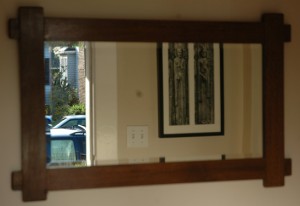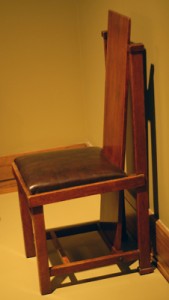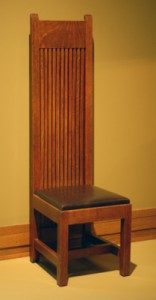Through tenons join the rails to the stiles of this Craftsman-inspired mirror and provide much of the ornament as well. I began by cutting the rails and stiles to size, then marked the rails for the mortises. I used a straight bit in my plunge router to waste out most of the mortises, then finished up a 1/4″ mortise chisel. I cut the tenons on the tablesaw in multiple passes, then pared them to fit with a rasp and chisel.
With joinery cut, I planed 1/8″ of the rails to vary the thickness of the frame members and bevelled the ends of stiles and rails and routed a rabbet in the back to hold the mirror. Like the hall table it complements, the white oak frame was fumed, then I applied a couple of coats of boiled linseed oil and garnet shellac. I had the mirror cut and bevelled at a local frame shop and put it place in the hall.





